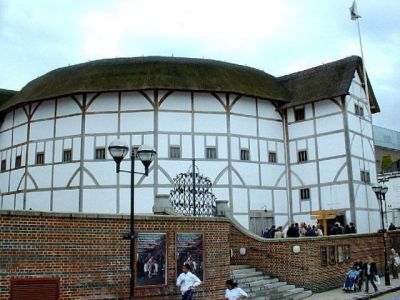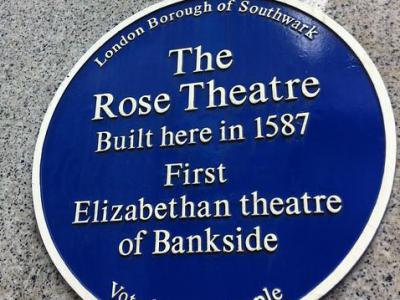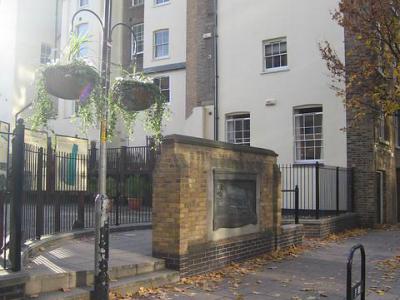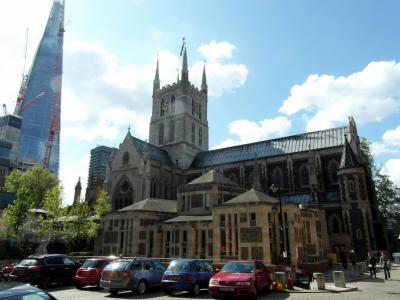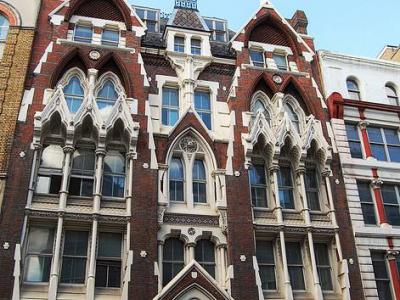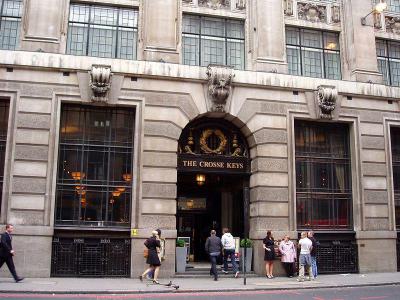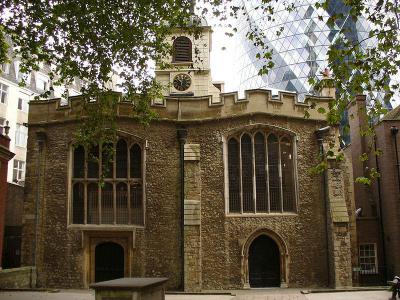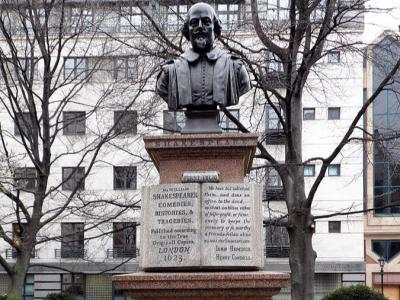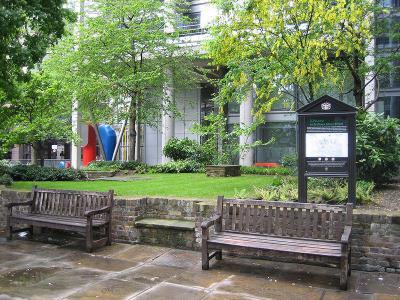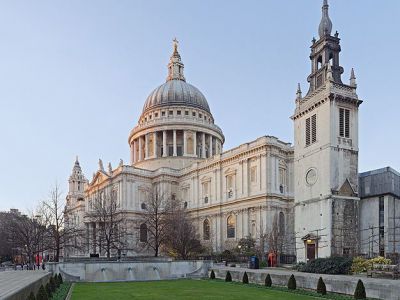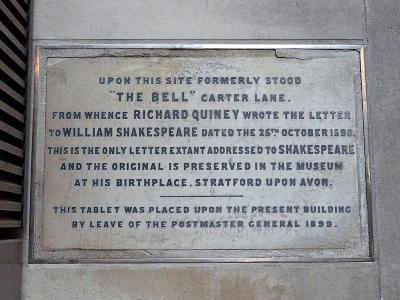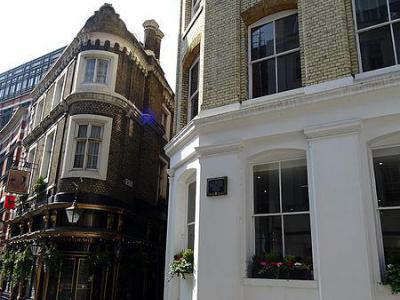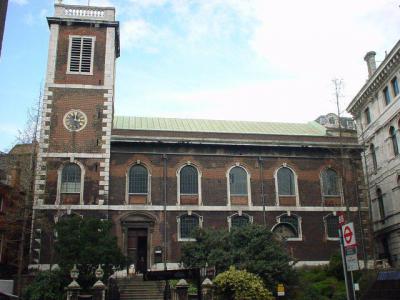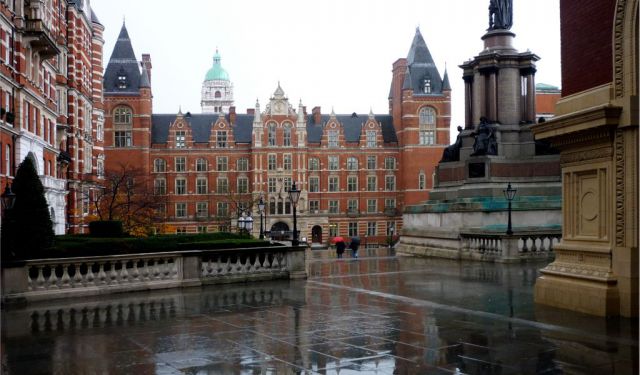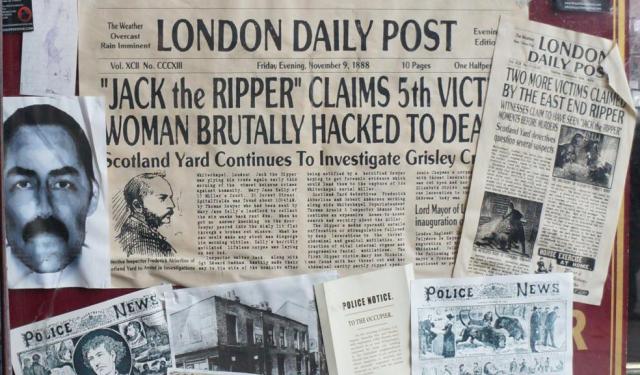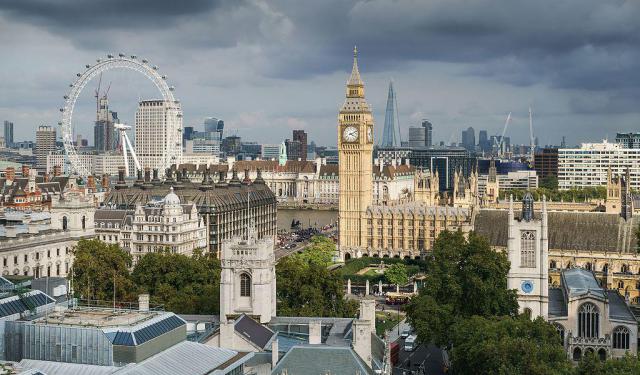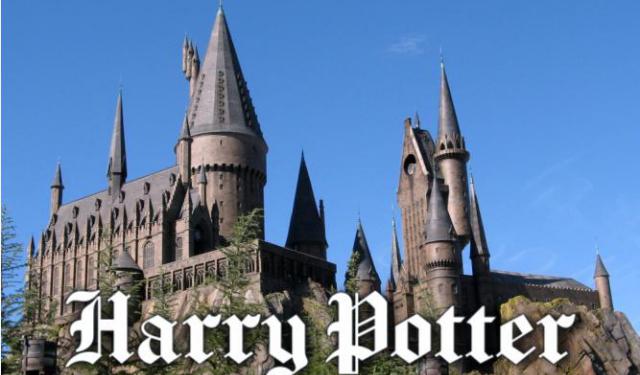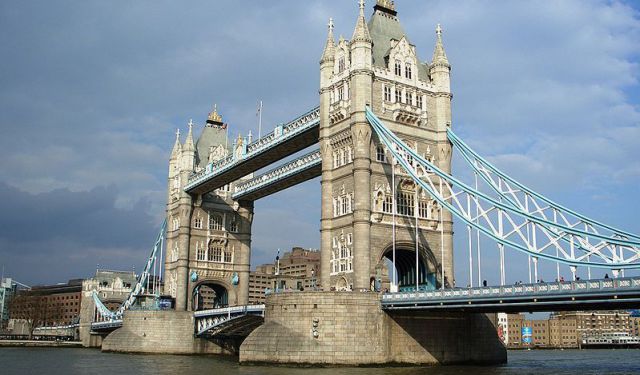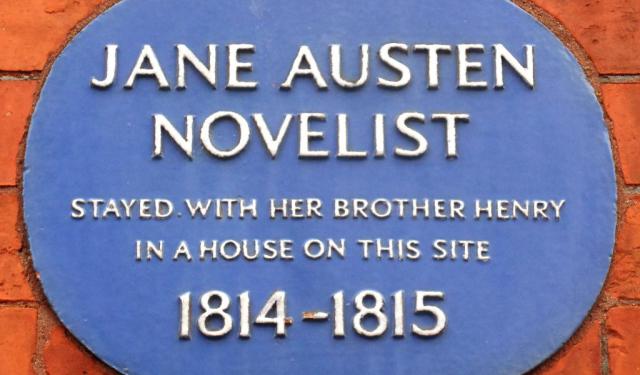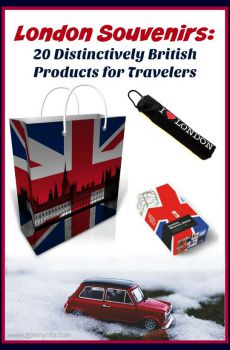Audio Guide: Shakespeare's London Walking Tour (Self Guided), London
You might know him as “the Bard,” but to England, William Shakespeare is practically the patron saint of poetic plot twists. Born in 1564 in Stratford-upon-Avon to John Shakespeare, a glove maker and town official, and Mary Arden from a prosperous farming family, young William started life with ink in his veins and Latin on his mind. Grammar school likely gave him his first taste of rhetoric. By the age of 18, he was already tying the knot with Anne Hathaway, who was eight years his senior. Together they had three kids, including twins, because, of course, Shakespeare did things in dramatic pairs...
In the late 1580s, our bard-in-the-making vanishes from the Stratford scene, only to reappear in London, elbow-deep in the chaotic genius of theaterland. He joins the Lord Chamberlain’s Men-later rebranded the King’s Men under the patronage of King James I-and juggles acting, managing, and writing like a true Renaissance multitasker.
South of the Thames in the rowdy, rent-cheap Southwark area, Shakespeare finds his creative stomping ground. His early plays likely debuted at places like the Boar’s Head Inn and Crosse Keys Inn, which were basically Elizabethan pop-up theaters with a pint. Then came the moment: the opening of the Globe theater in 1599. That’s when Hamlet, Othello, and King Lear took the stage, and audiences took to throwing everything except tomatoes...
Not far from The Globe, the Rose Theatre gave life to Shakespeare's bloodier tales like Titus Andronicus. But he didn’t just haunt the wings of playhouses-he lived it up near St. Olave Silver Street with the Mountjoy family (makers of theatrical costumes), worshiped at St. Helen’s Bishopsgate, and later bought some prime real estate at Blackfriars Gatehouse, which earned him a respectable address and a ticket to posh society, complete with ties to Saint Andrew-by-the-Wardrobe (yes, that's a real parish name).
Southwark Cathedral now proudly displays a statue and stained-glass nod to the man himself, and a monument to the First Folio stands as tribute to the ultimate director’s cut of his plays. Oh, and by St. Paul’s, there’s a plaque marking the only known letter addressed to Shakespeare-sent by a guy named Richard Quiney. Solid name, even better trivia...
By 1613, Shakespeare amassed great wealth through his theatrical success and retired to Stratford. He died in 1616, but his poetic ghost lingers on-in every soliloquy, every London alley, and every stage that dares to dream big. Because really, without London... we might’ve just called him “Will from Stratford.” And that just doesn’t have the same ring...
In the late 1580s, our bard-in-the-making vanishes from the Stratford scene, only to reappear in London, elbow-deep in the chaotic genius of theaterland. He joins the Lord Chamberlain’s Men-later rebranded the King’s Men under the patronage of King James I-and juggles acting, managing, and writing like a true Renaissance multitasker.
South of the Thames in the rowdy, rent-cheap Southwark area, Shakespeare finds his creative stomping ground. His early plays likely debuted at places like the Boar’s Head Inn and Crosse Keys Inn, which were basically Elizabethan pop-up theaters with a pint. Then came the moment: the opening of the Globe theater in 1599. That’s when Hamlet, Othello, and King Lear took the stage, and audiences took to throwing everything except tomatoes...
Not far from The Globe, the Rose Theatre gave life to Shakespeare's bloodier tales like Titus Andronicus. But he didn’t just haunt the wings of playhouses-he lived it up near St. Olave Silver Street with the Mountjoy family (makers of theatrical costumes), worshiped at St. Helen’s Bishopsgate, and later bought some prime real estate at Blackfriars Gatehouse, which earned him a respectable address and a ticket to posh society, complete with ties to Saint Andrew-by-the-Wardrobe (yes, that's a real parish name).
Southwark Cathedral now proudly displays a statue and stained-glass nod to the man himself, and a monument to the First Folio stands as tribute to the ultimate director’s cut of his plays. Oh, and by St. Paul’s, there’s a plaque marking the only known letter addressed to Shakespeare-sent by a guy named Richard Quiney. Solid name, even better trivia...
By 1613, Shakespeare amassed great wealth through his theatrical success and retired to Stratford. He died in 1616, but his poetic ghost lingers on-in every soliloquy, every London alley, and every stage that dares to dream big. Because really, without London... we might’ve just called him “Will from Stratford.” And that just doesn’t have the same ring...
How it works: Download the app "GPSmyCity: Walks in 1K+ Cities" from Apple App Store or Google Play Store to your mobile phone or tablet. The app turns your mobile device into a personal tour guide and its built-in GPS navigation functions guide you from one tour stop to next. The app works offline, so no data plan is needed when traveling abroad.
Shakespeare's London Walking Tour Map
Guide Name: Shakespeare's London Walking Tour
Guide Location: England » London (See other walking tours in London)
Guide Type: Self-guided Walking Tour (Sightseeing)
# of Attractions: 13
Tour Duration: 3 Hour(s)
Travel Distance: 4.7 Km or 2.9 Miles
Author: DanaOffice
Sight(s) Featured in This Guide:
Guide Location: England » London (See other walking tours in London)
Guide Type: Self-guided Walking Tour (Sightseeing)
# of Attractions: 13
Tour Duration: 3 Hour(s)
Travel Distance: 4.7 Km or 2.9 Miles
Author: DanaOffice
Sight(s) Featured in This Guide:
- Shakespeare's Globe
- Rose Theatre (Shakespeare-era playhouse)
- Globe Theatre (original site)
- Southwark Cathedral
- Boar's Head Inn
- Crosse Keys Inn (Shakespeare-era site)
- St. Helen's Bishopsgate
- First Folio Monument
- St. Olave Silver Street
- St. Paul's Cathedral
- Plaque to Richard Quiney's Letter
- Blackfriars Gatehouse (Shakespeare's former property)
- Saint Andrew-by-the-Wardrobe
1) Shakespeare's Globe (must see)
Welcome to Shakespeare’s Globe-or, as some like to call it, the Bard’s comeback tour, 400 years in the making. This stunning open-air theater is a faithful, full-thatch, no-nails, "mind the splinters" replica of the original Globe Playhouse. The original Globe opened in 1599 but met a rather dramatic end in 1613 when a stage cannon misfired during a performance. Boom! Theater barbecue...
A few centuries on, enter Sam Wanamaker-an American actor and director with a British theater obsession and the patience of a saint. He spent decades rallying support to resurrect the Globe, and by 1997, his dream was finally realized. The new Globe stands just 200 yards from where the original once stood, crafted with the same old-school tools and materials (no concrete shortcuts here). Today, it stages Shakespeare’s hits, deep cuts, and even some gems by his playwright pals.
Now, if you're planning to channel your inner Elizabethan and stand as a "Groundling"-congrats! You'll be closest to the action. But don’t expect a seat or sympathy for your aching feet. Want to sit like a civilized 17th-century noble? Great, there are benches-wooden, backless, and full of historical charm. Pro tip: rent a cushion. Or bring one. Or risk the full Tudor chiropractic experience...
And yes, this is an open-air venue. Come rain or shine, or heatwave, or hail-the show must go on. Umbrellas are a no-go (sorry, your neighbor’s view matters too), but you can grab a stylish Globe poncho, which doubles as a weather shield and souvenir.
The main season runs from April to October. If you prefer candlelit drama without the outdoor breeze, head next door to the Sam Wanamaker Playhouse, a 350-seat Jacobean gem lit entirely by candlelight. It’s cozy, atmospheric, and yes-some benches are still backless. You’ve been warned.
Why visit? – You may ask. Because this is as close as you’ll ever get to actual time travel without a DeLorean (remember that car from the Back to the Future trilogy). So, if you’re a die-hard Shakespeare fan or just in it for the costumes and swordfights, the Globe delivers the drama, the laughs, and the full Renaissance vibes all the same.
Curtain up, ponchos on-see you in Southwark...
Tip:
Join a guided tour before 4 pm (unless a matinee’s on, then get in before noon). Wanamaker tours are rarer, so book those in advance if you're lucky enough to find one.
A few centuries on, enter Sam Wanamaker-an American actor and director with a British theater obsession and the patience of a saint. He spent decades rallying support to resurrect the Globe, and by 1997, his dream was finally realized. The new Globe stands just 200 yards from where the original once stood, crafted with the same old-school tools and materials (no concrete shortcuts here). Today, it stages Shakespeare’s hits, deep cuts, and even some gems by his playwright pals.
Now, if you're planning to channel your inner Elizabethan and stand as a "Groundling"-congrats! You'll be closest to the action. But don’t expect a seat or sympathy for your aching feet. Want to sit like a civilized 17th-century noble? Great, there are benches-wooden, backless, and full of historical charm. Pro tip: rent a cushion. Or bring one. Or risk the full Tudor chiropractic experience...
And yes, this is an open-air venue. Come rain or shine, or heatwave, or hail-the show must go on. Umbrellas are a no-go (sorry, your neighbor’s view matters too), but you can grab a stylish Globe poncho, which doubles as a weather shield and souvenir.
The main season runs from April to October. If you prefer candlelit drama without the outdoor breeze, head next door to the Sam Wanamaker Playhouse, a 350-seat Jacobean gem lit entirely by candlelight. It’s cozy, atmospheric, and yes-some benches are still backless. You’ve been warned.
Why visit? – You may ask. Because this is as close as you’ll ever get to actual time travel without a DeLorean (remember that car from the Back to the Future trilogy). So, if you’re a die-hard Shakespeare fan or just in it for the costumes and swordfights, the Globe delivers the drama, the laughs, and the full Renaissance vibes all the same.
Curtain up, ponchos on-see you in Southwark...
Tip:
Join a guided tour before 4 pm (unless a matinee’s on, then get in before noon). Wanamaker tours are rarer, so book those in advance if you're lucky enough to find one.
2) Rose Theatre (Shakespeare-era playhouse)
Back in 1587, Philip Henslowe decided Bankside needed a little more drama-and not the tavern brawl kind... So, he built the Rose Theatre, the first purpose-built playhouse on that side of the Thames. With leading man Edward Alleyn and hotshot playwright Christopher Marlowe on board, the Rose quickly bloomed into a major cultural hotspot. Even a young Shakespeare made an early splash here-Titus Andronicus and a few other bloody masterpieces first hit the stage under its roof, though the Bard later jumped ship to the flashier new Globe, right next door.
A few centuries later, in 1989, the remains of the Rose were discovered hiding under an office block on Park Street. What followed was a fierce campaign, starring some of London’s finest theatrical luminaries, who fought to protect it from the bulldozers. Thanks to their efforts, the Rose lives on, though most of it stays tucked safely under waterlogged layers to prevent damage. Red lights now trace the theater's original outline, creating a ghostly, almost otherworldly vibe.
Inside, you’ll find passionate volunteers eager to show off replicas of artifacts found at the site, plus a small exhibition and a short narrated video looping every hour-perfect if you love your history with a dash of theatrical flair. And yes, the space even hosts live performances today (check their website for what’s on-and seriously, bring a coat, it gets chilly).
A few centuries later, in 1989, the remains of the Rose were discovered hiding under an office block on Park Street. What followed was a fierce campaign, starring some of London’s finest theatrical luminaries, who fought to protect it from the bulldozers. Thanks to their efforts, the Rose lives on, though most of it stays tucked safely under waterlogged layers to prevent damage. Red lights now trace the theater's original outline, creating a ghostly, almost otherworldly vibe.
Inside, you’ll find passionate volunteers eager to show off replicas of artifacts found at the site, plus a small exhibition and a short narrated video looping every hour-perfect if you love your history with a dash of theatrical flair. And yes, the space even hosts live performances today (check their website for what’s on-and seriously, bring a coat, it gets chilly).
3) Globe Theatre (original site)
If you wander down Park Street today, you’ll find a humble plaque and a few story panels marking the original spot where the Globe Theatre opened its doors in 1599. Back then, this stretch was called Maiden Lane, tucked inside The Liberty of the Clink-basically a medieval no-man’s-land just outside the City’s rules. At one point, the Bishop of Winchester took charge, and instead of banning the local theaters, animal fights, and brothels, he simply taxed them. A solid business model, really.
Shakespeare’s company flourished here, and about 15 of his plays-including some of the biggest hits-first hit the stage on this very ground.
Of course, no great story is complete without a little fire. On June 29, 1613, during a performance of Henry VIII, a prop cannon misfired and set the place ablaze. The Globe, made of good old flammable wood and thatch, went up like a tinderbox. Miraculously, nobody was hurt-except for one poor guy whose flaming trousers were put out with a well-aimed bottle of ale. (Talk about happy hour.)
The Globe was rebuilt the next year, but sadly, by 1644 it was demolished to make way for housing. Fast forward to our days: Shakespeare’s Globe, the modern reconstruction, opened its doors in 1997-with Henry V, naturally-proving that not even a fire, a bishop, or centuries of urban sprawl could keep Shakespeare’s spirit off the stage...
Shakespeare’s company flourished here, and about 15 of his plays-including some of the biggest hits-first hit the stage on this very ground.
Of course, no great story is complete without a little fire. On June 29, 1613, during a performance of Henry VIII, a prop cannon misfired and set the place ablaze. The Globe, made of good old flammable wood and thatch, went up like a tinderbox. Miraculously, nobody was hurt-except for one poor guy whose flaming trousers were put out with a well-aimed bottle of ale. (Talk about happy hour.)
The Globe was rebuilt the next year, but sadly, by 1644 it was demolished to make way for housing. Fast forward to our days: Shakespeare’s Globe, the modern reconstruction, opened its doors in 1997-with Henry V, naturally-proving that not even a fire, a bishop, or centuries of urban sprawl could keep Shakespeare’s spirit off the stage...
4) Southwark Cathedral
Locals call it "Suth-uck," but you can just call it London’s oldest Gothic church-and one of its best-kept secrets. Parts of Southwark Cathedral hail from the 12th century, though you wouldn’t know it from the modest tourist traffic. Inside, you'll stumble across all kinds of treasures, like a late-13th-century wooden knight who’s been lying down on the job for about 700 years.
Southwark started life as a priory, became a palace church for Henry VIII, and was eventually bought by a plucky group of merchants in 1611. With a bit of a Victorian glow-up during the 1800s, it officially got its cathedral badge in 1905 (better late than never). The building took quite a beating during the London Blitz-about 1,600 bombs were dropped on the site-and you can still spot the scars on its outer walls if you look closely.
Now, if you’re in a browsing mood, look up at the colorful 15th-century roof bosses-basically medieval doodles carved in wood-and don’t miss the tomb of poet John Gower. The latter was pals with Geoffrey Chaucer ("father of English literature", best known for The Canterbury Tales) and once served as poet laureate to Richard II. Fancy...
There’s also the Harvard Chapel, marking the baptism spot of John Harvard-yes, that very Harvard-the local lad who went off and founded a university in the U.S. you might have heard of.
Back in Shakespeare’s day, Southwark wasn’t just the place to pray-it was the place to play. Theaters like The Globe, The Rose, and The Swan turned the area into London’s entertainment hotspot. William himself bunked nearby for a while, close enough to hear the cathedral bells, and he used to worship here, too.
Was he a regular churchgoer? Hard to say. Shakespeare’s religious leanings are about as clear as a London fog. But his friends certainly showed up here. Even Shakespeare’s younger brother, Edmund-an actor like his big bro-was buried here in 1607.
Today, the cathedral tips its hat to the Bard with a stunning memorial: a reclining Shakespeare statue, casually lounging beneath a stained glass window sparkling with scenes from his plays. It’s literary London at its finest.
Before you leave, wander through the churchyard, now a lovely herb garden, and follow the charming Millennium Courtyard right down to the river. It’s history, drama, and a breath of fresh air-all tucked just out of sight from the tourist crowds.
Southwark started life as a priory, became a palace church for Henry VIII, and was eventually bought by a plucky group of merchants in 1611. With a bit of a Victorian glow-up during the 1800s, it officially got its cathedral badge in 1905 (better late than never). The building took quite a beating during the London Blitz-about 1,600 bombs were dropped on the site-and you can still spot the scars on its outer walls if you look closely.
Now, if you’re in a browsing mood, look up at the colorful 15th-century roof bosses-basically medieval doodles carved in wood-and don’t miss the tomb of poet John Gower. The latter was pals with Geoffrey Chaucer ("father of English literature", best known for The Canterbury Tales) and once served as poet laureate to Richard II. Fancy...
There’s also the Harvard Chapel, marking the baptism spot of John Harvard-yes, that very Harvard-the local lad who went off and founded a university in the U.S. you might have heard of.
Back in Shakespeare’s day, Southwark wasn’t just the place to pray-it was the place to play. Theaters like The Globe, The Rose, and The Swan turned the area into London’s entertainment hotspot. William himself bunked nearby for a while, close enough to hear the cathedral bells, and he used to worship here, too.
Was he a regular churchgoer? Hard to say. Shakespeare’s religious leanings are about as clear as a London fog. But his friends certainly showed up here. Even Shakespeare’s younger brother, Edmund-an actor like his big bro-was buried here in 1607.
Today, the cathedral tips its hat to the Bard with a stunning memorial: a reclining Shakespeare statue, casually lounging beneath a stained glass window sparkling with scenes from his plays. It’s literary London at its finest.
Before you leave, wander through the churchyard, now a lovely herb garden, and follow the charming Millennium Courtyard right down to the river. It’s history, drama, and a breath of fresh air-all tucked just out of sight from the tourist crowds.
5) Boar's Head Inn
If you ever wondered where Shakespeare’s favorite party animal, Falstaff, liked to hang out, look no further than the Boar’s Head Inn on Eastcheap. In Henry IV, Part 1, it’s the ultimate medieval dive bar, a place for bad jokes, good ale, and even worse decisions. Now, small catch: historians will tell you the real Boar’s Head didn’t exist in the early 1400s, when the play is set. But in Shakespeare’s time, absolutely - it had been there since at least 1537, well established as a landmark before getting flambéed in the Great Fire of London in 1666. (Don’t worry, they rebuilt it - Londoners weren’t about to let a good pub die.)
The inn carried on valiantly until the late 1700s, when it swapped beer for buttoned-up retail, and eventually the wrecking ball finished the job in 1831. But the legendary boar’s head sign survived and now lives proudly at Shakespeare’s Globe Theatre, because some things deserve a second act...
Today, the original site is swallowed up by the modern approach to London Bridge at Cannon Street. But just nearby on Eastcheap, a new tribute arose: in 1868, architect Robert Lewis Roumieu designed a neo-Gothic fever dream of a building - think flying brick gables and a boar’s head bursting out of a hedge. One architectural historian called it “one of the maddest displays of gabled Gothic brick in London," while another critic summed it up as “the scream you wake on at the end of a nightmare.”
In short: if Falstaff ever saw it, he’d probably order another round just to process it...
The inn carried on valiantly until the late 1700s, when it swapped beer for buttoned-up retail, and eventually the wrecking ball finished the job in 1831. But the legendary boar’s head sign survived and now lives proudly at Shakespeare’s Globe Theatre, because some things deserve a second act...
Today, the original site is swallowed up by the modern approach to London Bridge at Cannon Street. But just nearby on Eastcheap, a new tribute arose: in 1868, architect Robert Lewis Roumieu designed a neo-Gothic fever dream of a building - think flying brick gables and a boar’s head bursting out of a hedge. One architectural historian called it “one of the maddest displays of gabled Gothic brick in London," while another critic summed it up as “the scream you wake on at the end of a nightmare.”
In short: if Falstaff ever saw it, he’d probably order another round just to process it...
6) Crosse Keys Inn (Shakespeare-era site)
Back in Elizabethan London, if you wanted to catch a play, you didn’t have to go to the Globe or the Rose. Plenty of people saw the latest dramas at... inns. Yep, inns - because what better way to enjoy a tragic monologue than from the comfort of your balcony, pint in hand?
Most inns back then were built around big central courtyards, designed for guests arriving by horse or carriage. Surely, this setup was just too good to pass up for traveling acting troupes. They’d roll in, throw up a stage in the middle, sell cheap standing tickets for the courtyard crowd, and offer premium balcony views to those willing to cough up a few extra coins. Smart business...
One of the most famous spots was the Crosse Keys Inn on Gracechurch Street. Between 1576 and 1594, it was one of only four inns officially licensed to host plays. William Shakespeare and the Lord Chamberlain’s Men themselves were regulars there, charming the crowds long before the Globe even existed.
Of course, all good things must come to a screeching bureaucratic halt. By 1594, city officials decided inn-yard theaters were getting a bit too lively (read: noisy, chaotic, and maybe a little too much ale-fueled enthusiasm). They shut down performances at inns like the Crosse Keys, pushing the action into purpose-built theaters. Ironically, those theaters - balconies ringing a central yard - basically copied the inn design they tried so hard to replace.
Fast-forward to our times: the Crosse Keys isn’t hosting Shakespearean dramas anymore, but it is still a lively gathering place. Now a massive pub with soaring ceilings and a stained-glass dome, it offers real ales, craft beers, and fresh coffee - no horse-drawn carriages needed...
Most inns back then were built around big central courtyards, designed for guests arriving by horse or carriage. Surely, this setup was just too good to pass up for traveling acting troupes. They’d roll in, throw up a stage in the middle, sell cheap standing tickets for the courtyard crowd, and offer premium balcony views to those willing to cough up a few extra coins. Smart business...
One of the most famous spots was the Crosse Keys Inn on Gracechurch Street. Between 1576 and 1594, it was one of only four inns officially licensed to host plays. William Shakespeare and the Lord Chamberlain’s Men themselves were regulars there, charming the crowds long before the Globe even existed.
Of course, all good things must come to a screeching bureaucratic halt. By 1594, city officials decided inn-yard theaters were getting a bit too lively (read: noisy, chaotic, and maybe a little too much ale-fueled enthusiasm). They shut down performances at inns like the Crosse Keys, pushing the action into purpose-built theaters. Ironically, those theaters - balconies ringing a central yard - basically copied the inn design they tried so hard to replace.
Fast-forward to our times: the Crosse Keys isn’t hosting Shakespearean dramas anymore, but it is still a lively gathering place. Now a massive pub with soaring ceilings and a stained-glass dome, it offers real ales, craft beers, and fresh coffee - no horse-drawn carriages needed...
7) St. Helen's Bishopsgate
Sitting just east of Bishopsgate, the late Gothic church of Saint Helen has seen its share of drama-and not just the Shakespearean kind. Blasted by IRA bombings in the 1990s, the church managed to survive with its quirky personality (rippling medieval battlements and a Baroque bell turret that looks like it wandered in from another century) fully intact. St. Helen’s incorporates the original pre-Reformation Benedictine nunnery, plus five grand tombs that miraculously predate the Great Fire of London.
Post-bombing, the church got a bit of a makeover. Crews raised the floor, shuffled around the church screens, added a snazzy new organ gallery, and reoriented the seating to spotlight the pulpit-perfect for its now-evangelical mission.
But Saint Helen’s real claim to fame lies in a different domain. It once counted William Shakespeare among its parishioners. We know this thanks to a delightfully petty entry in the Bishopsgate tax records from November 15, 1597: out of 73 residents, our dear Bard was singled out for dodging a 5-shilling tax on £5 worth of goods. Turns out even Shakespeare couldn’t escape London’s paperwork. He was living nearby, probably in one of the buildings peeking over the churchyard-right around the time he was busy penning Romeo and Juliet...
Post-bombing, the church got a bit of a makeover. Crews raised the floor, shuffled around the church screens, added a snazzy new organ gallery, and reoriented the seating to spotlight the pulpit-perfect for its now-evangelical mission.
But Saint Helen’s real claim to fame lies in a different domain. It once counted William Shakespeare among its parishioners. We know this thanks to a delightfully petty entry in the Bishopsgate tax records from November 15, 1597: out of 73 residents, our dear Bard was singled out for dodging a 5-shilling tax on £5 worth of goods. Turns out even Shakespeare couldn’t escape London’s paperwork. He was living nearby, probably in one of the buildings peeking over the churchyard-right around the time he was busy penning Romeo and Juliet...
8) First Folio Monument
Tucked away on Love Lane, right where the old Saint Mary Aldermanbury churchyard once stood, you’ll find a pink granite monument built in 1896-complete with a very dignified Shakespeare bust giving you the side-eye. Officially, it's here to honor the First Folio of Shakespeare’s plays, but unofficially, it’s a big high-five to two of his old pals, Henry Condell and John Heminges. These two actors weren’t just theater buddies at The Globe-they were the ones who gathered up Shakespeare’s plays and got them printed after he died in 1616. They lived in this parish, and fittingly, are also buried here.
Now, the First Folio isn’t just any book. It rounded up 36 of Shakespeare’s plays, missing only a few outliers like Pericles, The Two Noble Kinsmen, Edward III, and the now-legendary lost works Cardenio and Love’s Labour’s Won. Out of some 750 copies printed, just 235 are still around today-mostly in museums, libraries, and a few very lucky living rooms.
And if you're wondering what all that old paper is worth? In 2001, one copy went under the hammer at Christie’s in New York for a cool $6.16 million. But there’s more! In 2020, another copy smashed records by selling for $10 million, officially crowning it the priciest literary work ever auctioned. Shakespeare: still making headlines, four centuries later...
Now, the First Folio isn’t just any book. It rounded up 36 of Shakespeare’s plays, missing only a few outliers like Pericles, The Two Noble Kinsmen, Edward III, and the now-legendary lost works Cardenio and Love’s Labour’s Won. Out of some 750 copies printed, just 235 are still around today-mostly in museums, libraries, and a few very lucky living rooms.
And if you're wondering what all that old paper is worth? In 2001, one copy went under the hammer at Christie’s in New York for a cool $6.16 million. But there’s more! In 2020, another copy smashed records by selling for $10 million, officially crowning it the priciest literary work ever auctioned. Shakespeare: still making headlines, four centuries later...
9) St. Olave Silver Street
Before World War II crashed the party, a few corners of London still clung to their Shakespearean roots. One such spot was the crossroads of Silver and Muggle-or Monkwell-Streets in Cripplegate. Sadly, the Blitz didn’t get the memo about historical preservation, and most of it was flattened.
Back in 1604, though, Shakespeare was very much alive and kicking there, renting a room in the house of Christopher Mountjoy-a French Huguenot who made fancy headpieces known as "tires" (yes, even back then, fashion was serious business). It is under that roof that Shakespeare hammered out heavyweights like Othello and King Lear.
Of course, London being London, disaster wasn’t far behind. The Great Fire of 1666 wiped the house clean off the map, and after WWII, the area got a complete makeover. Silver Street, once a short, lively lane, also boasted St. Olave’s Church, right across from Shakespeare’s digs. The church didn’t survive the Great Fire either-because apparently, history in London comes with a built-in self-destruct button.
Nowadays, if you wander along London Wall, you’ll find a modest little square where a block of stone still bears a medieval skull and crossbones. It marks the old graveyard of St. Olave’s. If you squint a bit, you might just picture Shakespeare, quill in hand, gazing out the window at that very symbol of mortality-a fitting backdrop for the man who gave us "to be or not to be."
Back in 1604, though, Shakespeare was very much alive and kicking there, renting a room in the house of Christopher Mountjoy-a French Huguenot who made fancy headpieces known as "tires" (yes, even back then, fashion was serious business). It is under that roof that Shakespeare hammered out heavyweights like Othello and King Lear.
Of course, London being London, disaster wasn’t far behind. The Great Fire of 1666 wiped the house clean off the map, and after WWII, the area got a complete makeover. Silver Street, once a short, lively lane, also boasted St. Olave’s Church, right across from Shakespeare’s digs. The church didn’t survive the Great Fire either-because apparently, history in London comes with a built-in self-destruct button.
Nowadays, if you wander along London Wall, you’ll find a modest little square where a block of stone still bears a medieval skull and crossbones. It marks the old graveyard of St. Olave’s. If you squint a bit, you might just picture Shakespeare, quill in hand, gazing out the window at that very symbol of mortality-a fitting backdrop for the man who gave us "to be or not to be."
10) St. Paul's Cathedral (must see)
For centuries, Saint Paul's Cathedral has stood tall, quite literally, as London’s ultimate comeback story in stone form. After the Great Fire of 1666 turned the medieval cathedral (originally founded in 1087) into a smoldering memory, Sir Christopher Wren got the challenge of designing the masterpiece we see today.
Construction began in 1675 and took 35 years. Wren’s first design was too modern. The second-too modern again and too Catholic-looking. He eventually struck a deal with the Anglican clergy: throw in a classic English spire, but sneak in a magnificent triple-stacked dome instead. Now it’s the second-largest cathedral dome in the world after St. Peter’s in Rome. Subtle flex.
During WWII and the Blitz, flames again came for the cathedral, and again, it stood its ground. Brave volunteers fought fires on the dome, saving it from complete destruction. Saint Paul’s became a beacon of hope in the rubble. Fittingly, above the south entrance, you’ll spot the Latin word "Resurgam," meaning “I shall rise again.” Very on brand.
Inside, the cathedral is pure English Baroque drama. Climb 257 steps to the Whispering Gallery, where even your gossip echoes in style. Add another 119 steps for the Stone Gallery and 152 more for the Golden Gallery-because apparently, stairs build character. But the panoramic views of London are worth every calf cramp.
Down below in the crypt, you’ll find the final resting places of national legends: the Duke of Wellington, Admiral Nelson, and of course, Wren himself. His epitaph reads: “If you seek his monument, look around you.”
Saint Paul’s was basically Dickens' favorite rooftop. In Master Humphrey’s Clock, he climbs to the top for a bird’s eye view of life’s contradictions, which, come to think of it, London is full of. In David Copperfield, Peggotty enjoys the view too. Dickens knew this neighborhood well and even attended the Duke of Wellington’s funeral here in 1852.
Back in Shakespeare’s day, the area around Saint Paul’s was bustling with booksellers. This was the epicenter of the English publishing world- the Bard’s plays were printed and sold right here. Odds are he browsed the stalls himself, possibly muttering, “To plagiarize, or not to plagiarize...”
And for the modern-day wizarding crowd: yes, that staircase you recognize from Harry Potter and the Prisoner of Azkaban is real. The magical-looking Geometric Staircase-aka the Dean’s Stair-floats elegantly in the cathedral’s South West Bell Tower. You might remember it from Professor Trelawney’s Divination class or The Goblet of Fire. You’ll need a ticket to see it, but for Potterheads, it’s practically a rite of passage.
Tip:
Book online to skip the queue. And maybe spring for the audio tour-unless you’ve got me in your ear, of course.
Construction began in 1675 and took 35 years. Wren’s first design was too modern. The second-too modern again and too Catholic-looking. He eventually struck a deal with the Anglican clergy: throw in a classic English spire, but sneak in a magnificent triple-stacked dome instead. Now it’s the second-largest cathedral dome in the world after St. Peter’s in Rome. Subtle flex.
During WWII and the Blitz, flames again came for the cathedral, and again, it stood its ground. Brave volunteers fought fires on the dome, saving it from complete destruction. Saint Paul’s became a beacon of hope in the rubble. Fittingly, above the south entrance, you’ll spot the Latin word "Resurgam," meaning “I shall rise again.” Very on brand.
Inside, the cathedral is pure English Baroque drama. Climb 257 steps to the Whispering Gallery, where even your gossip echoes in style. Add another 119 steps for the Stone Gallery and 152 more for the Golden Gallery-because apparently, stairs build character. But the panoramic views of London are worth every calf cramp.
Down below in the crypt, you’ll find the final resting places of national legends: the Duke of Wellington, Admiral Nelson, and of course, Wren himself. His epitaph reads: “If you seek his monument, look around you.”
Saint Paul’s was basically Dickens' favorite rooftop. In Master Humphrey’s Clock, he climbs to the top for a bird’s eye view of life’s contradictions, which, come to think of it, London is full of. In David Copperfield, Peggotty enjoys the view too. Dickens knew this neighborhood well and even attended the Duke of Wellington’s funeral here in 1852.
Back in Shakespeare’s day, the area around Saint Paul’s was bustling with booksellers. This was the epicenter of the English publishing world- the Bard’s plays were printed and sold right here. Odds are he browsed the stalls himself, possibly muttering, “To plagiarize, or not to plagiarize...”
And for the modern-day wizarding crowd: yes, that staircase you recognize from Harry Potter and the Prisoner of Azkaban is real. The magical-looking Geometric Staircase-aka the Dean’s Stair-floats elegantly in the cathedral’s South West Bell Tower. You might remember it from Professor Trelawney’s Divination class or The Goblet of Fire. You’ll need a ticket to see it, but for Potterheads, it’s practically a rite of passage.
Tip:
Book online to skip the queue. And maybe spring for the audio tour-unless you’ve got me in your ear, of course.
11) Plaque to Richard Quiney's Letter
Here’s a little gem of literary history: this plaque marks the only surviving piece of mail connected to William Shakespeare-either to him or from him. One lonely letter. The original is now kept under serious lock and key at the Shakespeare Birthplace Trust in Stratford.
The letter dates back to 1598 and was written by Richard Quiney, a merchant and local bigwig from Stratford-upon-Avon. Addressed to his "loving good friend Mr. William Shakespeare," it is basically an Elizabethan way of asking for money-Quiney was seeking a loan of £30, which would be about £3,750 today. Not exactly pocket change...
Fun twist: Richard’s son, Thomas Quiney, would later marry Shakespeare’s younger daughter. So yes, they kept it in the family, after all.
At the time, Richard was stuck in London for four long months, trying to plead Stratford’s case to Parliament after a nasty new tax had the town in serious financial trouble.
Now, here's the kicker: it’s pretty likely Shakespeare never even saw the letter. It was later found stuffed among Quiney’s papers after he died in 1602. Still, records suggest Shakespeare tried to help anyway-possibly through a face-to-face meeting.
And in the end, Stratford caught a break. Queen Elizabeth herself granted relief, and Quiney got reimbursed for all the drama and travel expenses. A happy ending... just without the loan.
The letter dates back to 1598 and was written by Richard Quiney, a merchant and local bigwig from Stratford-upon-Avon. Addressed to his "loving good friend Mr. William Shakespeare," it is basically an Elizabethan way of asking for money-Quiney was seeking a loan of £30, which would be about £3,750 today. Not exactly pocket change...
Fun twist: Richard’s son, Thomas Quiney, would later marry Shakespeare’s younger daughter. So yes, they kept it in the family, after all.
At the time, Richard was stuck in London for four long months, trying to plead Stratford’s case to Parliament after a nasty new tax had the town in serious financial trouble.
Now, here's the kicker: it’s pretty likely Shakespeare never even saw the letter. It was later found stuffed among Quiney’s papers after he died in 1602. Still, records suggest Shakespeare tried to help anyway-possibly through a face-to-face meeting.
And in the end, Stratford caught a break. Queen Elizabeth herself granted relief, and Quiney got reimbursed for all the drama and travel expenses. A happy ending... just without the loan.
12) Blackfriars Gatehouse (Shakespeare's former property)
If you head to the Cockpit pub in the City of London today, you're standing right where Shakespeare once made a very smart real estate move. The Blackfriars Gatehouse, sitting just a pint’s throw from the old Blackfriars Playhouse, was the Bard’s one and only known property purchase in London. Pretty handy location, too-King’s Men, Shakespeare’s theater company, were performing his plays at Blackfriars just like they were over at the Globe, keeping the Elizabethan drama scene very much alive.
Now, a little backstory: the theater itself was built on the bones of a Dominican monastery founded way back in 1275-until Henry VIII, in full "dissolver of monasteries" mode, shut it down in 1538. Goodbye monks, hello actors!
Some decades later, on March 10, 1613, Shakespeare bought the Gatehouse from one Henry Walker-a "citizen and minstrel" (i.e., musician with property to spare)-for a hefty £140. That deed is still around today, safely tucked in the London Metropolitan Archives. And here’s the kicker: it’s one of only six places on Earth where you can see Shakespeare’s actual signature. Six. Total.
Despite all the juicy proximity to two major theaters, there's no hard proof that Shakespeare actually lived in the Gatehouse. Maybe he thought about it. Maybe he liked the idea of an easy stroll to work. But when he died in Stratford-upon-Avon three years later, the house stayed more investment property than bachelor pad-bequeathed to his daughter, Susanna, who got the last word in her father's London affairs.
Now, a little backstory: the theater itself was built on the bones of a Dominican monastery founded way back in 1275-until Henry VIII, in full "dissolver of monasteries" mode, shut it down in 1538. Goodbye monks, hello actors!
Some decades later, on March 10, 1613, Shakespeare bought the Gatehouse from one Henry Walker-a "citizen and minstrel" (i.e., musician with property to spare)-for a hefty £140. That deed is still around today, safely tucked in the London Metropolitan Archives. And here’s the kicker: it’s one of only six places on Earth where you can see Shakespeare’s actual signature. Six. Total.
Despite all the juicy proximity to two major theaters, there's no hard proof that Shakespeare actually lived in the Gatehouse. Maybe he thought about it. Maybe he liked the idea of an easy stroll to work. But when he died in Stratford-upon-Avon three years later, the house stayed more investment property than bachelor pad-bequeathed to his daughter, Susanna, who got the last word in her father's London affairs.
13) Saint Andrew-by-the-Wardrobe
Perched proudly above Queen Victoria Street, Saint Andrew-by-the-Wardrobe has one of those names that sounds like it belongs in a fairy tale-or at least a very complicated medieval filing system. Originally known as Saint Andrew juxta Baynard Castle (because, naturally, there was a castle next door), it picked up its current title in 1361 when the King’s Great Wardrobe-basically the royal walk-in closet for crowns, capes, and other essentials-moved in just around the corner.
Both the castle and the church were reduced to ashes in the Great Fire of London in 1666. But like a phoenix-or at least a very determined architect-Sir Christopher Wren rebuilt Saint Andrew’s between 1685 and 1693. And what's more: this was his very last church project and his cheapest, clocking in at just over £7,000-courtesy of the coal tax. (Yes, Londoners literally paid for their churches one shovelful at a time.)
But that's not all the curious facts about this location. William Shakespeare himself had ties to this spot. For about 15 years, he worked just down the street at the Blackfriars Theatre and eventually bought a home in Ireland Yard, right inside Saint Andrew’s parish lines. Today, the church honors the Bard with a memorial in the western gallery: a charming carving of Shakespeare and his musical buddy John Dowland, both kneeling on a stage while cherubs dramatically yank back the final curtain. Because, of course, even angels appreciate good theater.
Beneath the scene, a fitting tribute reads:
"If music and sweet poetry agree,
As they must needs, the sister and the brother…
Dowland to thee is dear, whose heavenly touch
Upon the lute doth ravish human sense…"
In short, apart from being a great name, Saint Andrew-by-the-Wardrobe is a backstage pass to Shakespeare’s London.
Both the castle and the church were reduced to ashes in the Great Fire of London in 1666. But like a phoenix-or at least a very determined architect-Sir Christopher Wren rebuilt Saint Andrew’s between 1685 and 1693. And what's more: this was his very last church project and his cheapest, clocking in at just over £7,000-courtesy of the coal tax. (Yes, Londoners literally paid for their churches one shovelful at a time.)
But that's not all the curious facts about this location. William Shakespeare himself had ties to this spot. For about 15 years, he worked just down the street at the Blackfriars Theatre and eventually bought a home in Ireland Yard, right inside Saint Andrew’s parish lines. Today, the church honors the Bard with a memorial in the western gallery: a charming carving of Shakespeare and his musical buddy John Dowland, both kneeling on a stage while cherubs dramatically yank back the final curtain. Because, of course, even angels appreciate good theater.
Beneath the scene, a fitting tribute reads:
"If music and sweet poetry agree,
As they must needs, the sister and the brother…
Dowland to thee is dear, whose heavenly touch
Upon the lute doth ravish human sense…"
In short, apart from being a great name, Saint Andrew-by-the-Wardrobe is a backstage pass to Shakespeare’s London.
Walking Tours in London, England
Create Your Own Walk in London
Creating your own self-guided walk in London is easy and fun. Choose the city attractions that you want to see and a walk route map will be created just for you. You can even set your hotel as the start point of the walk.
Kensington/Knightsbridge Walking Tour
Situated just below Hyde Park, Knightsbridge and South Kensington are two adjacent neighborhoods with grand Victorian homes and leafy garden squares. Home to London’s most expensive homes, Knightsbridge has some of the highest density of millionaires in the world. This is clearly reflected in the selection of stores & restaurants in the area, including the famous Harvey Nichols and Harrods... view more
Tour Duration: 2 Hour(s)
Travel Distance: 4.5 Km or 2.8 Miles
Tour Duration: 2 Hour(s)
Travel Distance: 4.5 Km or 2.8 Miles
Jack the Ripper Walking Tour
Jack the Ripper, an unidentified serial killer who terrorized the British capital in 1888, became notorious for the series of brutal and gruesome murders that he carried out in the East End of London. The primary setting for the Jack the Ripper attacks was Whitechapel, at the time a poverty-stricken and crime-ridden district, known for its dark alleys and narrow streets.
The name "Jack the... view more
Tour Duration: 2 Hour(s)
Travel Distance: 4.0 Km or 2.5 Miles
The name "Jack the... view more
Tour Duration: 2 Hour(s)
Travel Distance: 4.0 Km or 2.5 Miles
London Introduction Walking Tour
London: the capital of England, heart of the UK, and international heavyweight in history, culture, and sheer charm. Its name comes straight out of Rome. Londinium was founded circa 43 AD as a trading post. Then came Queen Boudica in 61 AD, who, let’s say, didn’t care much for Roman urban planning and burnt it to the ground. But Londinium wasn’t one to stay down-it bounced back, flourished,... view more
Tour Duration: 2 Hour(s)
Travel Distance: 4.2 Km or 2.6 Miles
Tour Duration: 2 Hour(s)
Travel Distance: 4.2 Km or 2.6 Miles
Harry Potter Walking Tour II
The Harry Potter movies and London go together like Butterbeer and a cold winter night at Hogsmeade. While much of the magical world was brought to life with computer-generated images and studio sets, quite a few iconic scenes were filmed right in the heart of the British capital, transforming ordinary city spots into wizarding landmarks. Here's a look at six more London locations where the... view more
Tour Duration: 2 Hour(s)
Travel Distance: 4.1 Km or 2.5 Miles
Tour Duration: 2 Hour(s)
Travel Distance: 4.1 Km or 2.5 Miles
City of London Walking Tour
The City of London, often referred to simply as the City (with the capital C), is the historic and financial core of the British capital. Despite being just over one square mile in area (for which reason it is also lovingly dubbed the Square Mile), it holds immense importance as the original site of Londinium, the Roman settlement founded circa 43 AD. Over the centuries, this small patch of land... view more
Tour Duration: 3 Hour(s)
Travel Distance: 4.6 Km or 2.9 Miles
Tour Duration: 3 Hour(s)
Travel Distance: 4.6 Km or 2.9 Miles
Jane Austen’s London
The celebrated English novelist Jane Austen primarily lived between Bath and Hampshire. However, London also held a special significance in Austen's life. Many of her novels drew inspiration from the capital, like Lydia Bennet and Mr Wickham’s elopement in “Pride & Prejudice.”
One of Austen's cherished spots in London was Twinings, a renowned tea shop. Jane Austen was known... view more
Tour Duration: 2 Hour(s)
Travel Distance: 4.4 Km or 2.7 Miles
One of Austen's cherished spots in London was Twinings, a renowned tea shop. Jane Austen was known... view more
Tour Duration: 2 Hour(s)
Travel Distance: 4.4 Km or 2.7 Miles
Useful Travel Guides for Planning Your Trip
London Souvenirs: 18 Distinctively British Products for Travelers
Most visitors to London consider shopping as part of their must-do London experience. From street markets to Victorian arcades to snobbish Sloane Square to busy Oxford Street, there are a host of shops selling items which typically represent this vibrant city. Whether you are shopping for souvenirs...
The Most Popular Cities
/ view all



